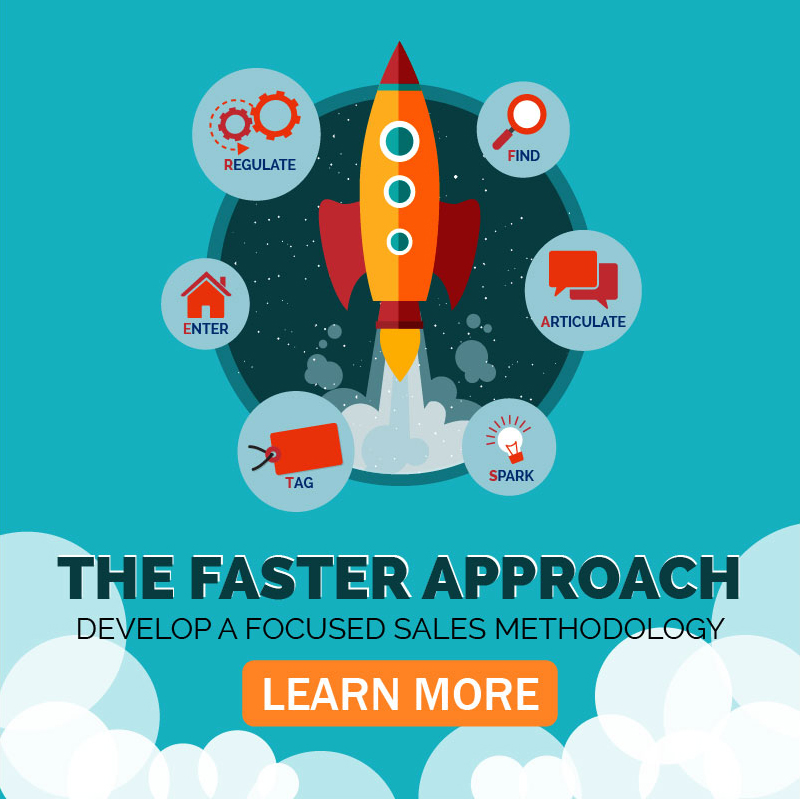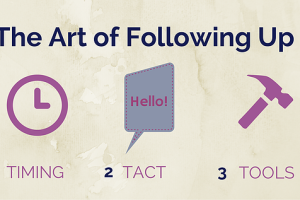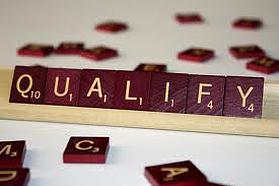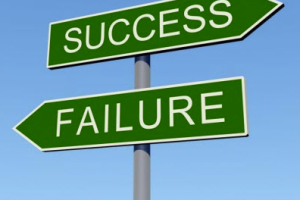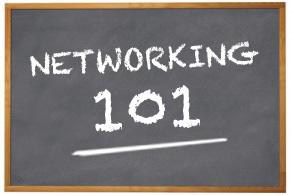This is the last of a series of seven posts on the importance of bringing a focused methodology to the madness that is the sales environment.
By this point we’ve done just about all that we can to reach out to the customer directly. We’ve communicated real value by “finding the need” and “articulating the solution.” Most likely, we’ve successfully “sparked a fire” and “tagged an advocate” to push the deal towards completion. We have also “entered the fray,” sizing up the competition and approaching other key players in the buyer’s organization to prevent unforeseen obstacles from impeding our advocates’ ability to make the case for our solutions.
There’s really not much else we can do on that end of the sale, yet we still have one final letter in our acronym: the letter “R.”
This one reminds us to “regulate the sale,” or to deliberately think through how we allocate our resources towards various deals in the works.
Our aim is to optimally align our sales efforts with our customer’s progress toward a final decision. This helps us pursue multiple opportunities at the same time without dropping the ball on any of them. It also ensures that we respond nimbly to customers who need to move quickly while simultaneously tracking step-by-step with our slower-moving customers who have more complex buying processes.
All the other facets of our sales methodology have focused on how we actually interact with our customers, but this last one deals with how we organize our internal processes to accommodate customer needs.
Customers each handle their procurement a little differently, of course, so there’s no magic bullet approach to process alignment.
Nevertheless, as we go through all of the other steps in our sales methodology described in previous posts, it helps to remember a few key ideas, which will serve as the remaining posts to complete F.A.S.T.E.R.
Lead qualification involves deep understanding of a customer’s buying process.
It may seem trite to say this, but effective sales are less about us than the customer.
We too easily lose sight of this in our preoccupation with sales metrics that matter to us but not to the buyers we’re courting – It’s their process, not ours. Our task is not to work buyers through your sales process, but to help them along their buying path. An easier journey makes for an easier sale.
When we set out to qualify the leads we’re working at any given time, a key question we should be asking ourselves is how well we understand their buying processes—including the level of organizational complexity that surrounds purchase decisions.
Before we can really sell anything, especially in a complex acquisitions process, we need to have a good idea about how the customer plans to reach a buying decision.
Sales trainer Richard Ruff suggests six questions we can use to determine whether we’ve adequately vetted a customer’s buying process. They revolve around many of the things we’ve already talked about in this series—who the key players are in the decision and their relationship to each other, whether we have or can develop an internal champion, our positioning relative to competitors—but two additional questions are of special merit for our purposes here. One concerns the specific criteria for how the final decision-makers will determine a vendor for their preferred solution. The other concerns whether or not the project has been adequately budgeted and funded.
We need to learn these things as early in the process as possible so that we can estimate how long it will realistically take for a decision to be made and, more importantly, so that we can tailor our approach to address the criteria for making that decision at each point along the way. Should we learn, for instance, that a particular VP is awaiting the results of a three-month study of user needs before signing off on a proposed solution, then we know up-front we’re not going to close the deal within the quarter, and we can plan accordingly. Likewise, if we learn that an acquisition has already been funded, we can gear up for an intense push to select the best solution in a relatively short period of time.
Sales management expert Richard Young identifies five stages in the typical customer’s buying cycle: sleeping, realization, justification, decision/change, and purchase. The cycle begins with a lack of awareness regarding a particular problem or need, then proceeds through the identification of the need, the search for a solution, and finally to a purchase decision. Different sales and marketing techniques are appropriate for each stage, and different key players will get involved at different points.
It’s our job to map these out and to align our sales process to accommodate the customer’s progress through each stage. Occasionally, we’ll come on board after the justification stage, when the customer is actively seeking the best solution. If so, we need to recognize that what is needed is a close match between product features and customer requirements.
A well-prepared sales presentation demonstrating thought-leadership in the industry may be sufficient to net the deal in relatively quick order. But more often than not, we’ll be getting involved at the sleeping or realization stage, and we’ll have a significant amount of education to do before our customer is going to become highly motivated to purchase. Depending on the complexity of the organization’s internal processes for reaching consensus in such matters, it could take weeks, months, perhaps even years for the status quo to be disrupted.
We need to know, because our priorities will rarely align naturally with our customers’. We have to decide whether to pursue and how to go about it.
There’s a difference between sales and marketing.
The salesperson’s single most valuable single resource is time. It stands to reason that most of that time should be spent closing on promising deals, not chasing after lukewarm leads.
As a first step in the direction of time management, therefore, it helps for us to begin delineating exactly where we are in a buyer’s procurement process and strategize accordingly. I like to rank opportunities according to the timeframe within which I reasonably expect them to close.
Type A deals look to close within the next three months, while Type B deals may take 3-12 months. “A” deals deserve a salesperson’s most concerted resources, of course, but even “B” deals should be diligently cultivated in order to ensure they close in a timely manner.
It’s the Type C deals—those that will take a year or longer to close— that deserve our least amount of time. Instead… They should be owned by marketing. Because today’s type C deals are obviously tomorrow’s A’s and B’s.
So the best run companies have marketing running activities to nurture them.
It’s vital for us to recognize where we are with our prospects at any given stage in their buying process. Regardless of where we might like to be with them, and regardless of how much time we’ve already spent with them, if our customers are struggling to see the complete value in our propositions, we need to act more like marketers than salespeople.
One of the best ways to lose a potential customer is to prematurely funnel them toward a sales decision when, from the customer’s perspective, we’re really still in the “exploration” phase.
Effective salespeople have to know when to court and when to close.
We don’t want to split hairs here, but it’s important to recognize the difference between sales and marketing.
Sales is about processing qualified deals in an efficient, mutually beneficial manner.
Marketing, on the other hand, requires deliberate, long-term strategies for continuously communicating value.
Salespeople spend most of their time in one-on-one conversations, learning the specific needs of their customers and making a constructive case for particular solutions.
Marketers spend their time creatively positioning their brands in a broader market context, thinking of the needs of more than just one or two companies at a time. Marketers rely on sales feedback to ascertain customer needs and effectively communicate value.
Salespeople rely on effective marketing to convert prospects into qualified leads. It’s a symbiotic relationship, one that should move customers seamlessly from inquiry to execution. But it only works when both recognize where their relative domains begin and end.
Marketing to a prospective customer can be as simple as subscribing him or her to informative monthly newsletters our organizations publish on topics of peculiar interest to our target markets. Or it might be a matter of sharing a success story or two from a previous customer relationship to stimulate new interest in solving a particular problem—perhaps even a problem the customer presently fails to appreciate.
At any rate, in choosing to market to a prospect rather than sell, we honor the fact that a customer has not yet reached the point of decision in his or her buying process, and we strategically redirect our resources toward more urgent leads. The goal of effective marketing is brand awareness and preference; we want those prospects to think of us first when the time comes for them to begin actively seeking their solution.
But until that point, we shouldn’t waste valuable time pushing them into a sales process that is out of sync with their readiness to buy.
That leads us to our final point…
There’s a time to move on.
No one likes to walk away from what my have seemed at one time to be a promising deal, but since time is money, a good sales methodology includes a provision for identifying those deals that are simply not going to happen.
The goal here is to avoid sinking further resources into an unfruitful relationship.
We’re talking about those buyers who have unclear or disorderly buying processes, or situations in which an otherwise promising deal stalls interminably with a key decision-maker who seems wholly unmotivated to act. There is also the dreaded “no decision” problem, where a well-qualified lead suddenly or inexplicably goes dark on us, usually because of internal challenges that may not be transparent to us.
When we find ourselves in this situation, there comes a point when we have to lay our cards on the table and be prepared to politely but assertively withdraw our offer.
Rule of thumb: If buyers are still considering our offering, they’ll object strenuously. Alternatively, they’ll be relieved and comply. Either way, you get a decision, which is better than no decision.
We can’t align our sales process to a customer who lacks sufficient intention to buy.
So we move on and begin aggressively qualifying new leads.
We’ve covered a lot of ground over in these last posts, so let’s take a moment to review. In the end, what we have with the F.A.S.T.E.R. approach is my proven sales methodology and process.
There’s no right or wrong way to apply the principles learned within, and there’s always room for improvement. But by following the basic principles we’ve outlined here—by offering real solutions to real problems, generating authentic urgency, and partnering with the right internal people to see the deal through—we discover that there really is a method for the madness of the sales environment.
We learn that great salespeople are not just lucky: they bring discipline and intentionality to their efforts to reach prospective customers and communicate value.
